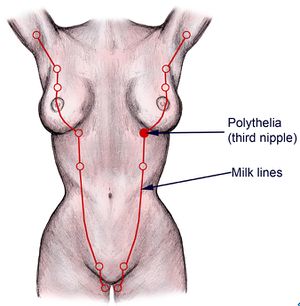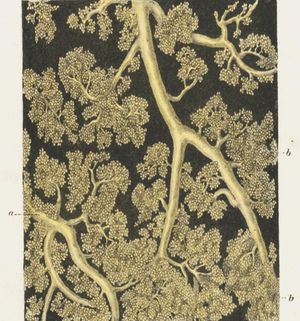Difference between revisions of "Breast: Normal Anatomy of the Breast"
| Line 1: | Line 1: | ||
{{:TOC}} | {{:TOC}} | ||
| − | {{img1|1-1 NA normal nipple 6.30.14-2.jpg| | + | {{img1|1-1 NA normal nipple 6.30.14-2.jpg|Cross section of a normal nipple and ducts}} |
== Location == | == Location == | ||
Revision as of 10:43, July 8, 2020
Contents
| 1-1 NA normal nipple 6.30.14-2.jpg | |
Location

Glandular Tissue
Mammary glandular tissue consists of arborizing ducts and terminal lobules. The largest ducts, termed lactiferous sinuses, drain onto the skin of the nipple. They number between 15 and 25, have diameters of a few millimeters, and display folded, stellate configurations when cut in cross section. The lactiferous sinuses form a compact bundle in the nipple and extend posteriorly to become large ducts. As the large ducts ramify within the gland, they diminish in caliber and branch to form small ducts, ductules, and extralobular terminal ductules, which together comprise the conducting portion of the mammary glandular tree. The extralobular terminal ductules drain terminal duct lobular units. The secretory component of the gland consists of intralobular terminal ductules and their attached acini.
Quiz
<https://hub.partners.org/pathology/assessment/instructions?assessment_id=16607586" height="666" width="100%"></htmltag>
